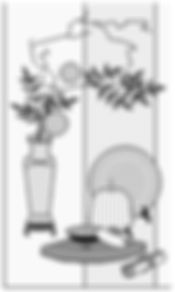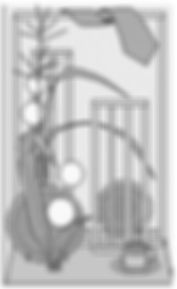- Admin
Let’s Do Tables!!
For too long, there have been only a few schedules that include tables. Tables are fun to do and a great attraction for the show. The ARS Board of Directors recently approved a Court of Etiquette Award for Miniature roses as well as the Award for large roses we currently use. Also, table arrangements are eligible for the ARS Gold, Silver and Bronze Medal Awards.
In our Grand Valley Rose Society schedule, we have both tea tables (requiring two place-settings) and single place-setting entries, because we have one determined lady who has convinced us that these are an important part of the show. She is right!

We exhibit three types of tables:
Functional tables are exhibits arranged for the service of food. It looks ready for a person to sit down to eat!
Exhibition tables have the components of a traditional table, but they are not arranged in the usual way for the service of food.
Miniature place settings utilize small dishes and miniature roses. They are set up and judged by the methods used for the large ones, but with more attention paid to proportion and scale.
Any table class can be as formal or as informal as the schedule permits. It is imperative that the schedule describe the class sufficiently so tables can be judged for suitability to the occasion. The schedule should indicate theme, type of table, number of place settings (if applicable), and size of tables or niche space, leaving room for interpretation and distinction.
Exhibition tables are somewhat impractical except in niches. But some modifications can be introduced that can make them both creative and in good taste. The upper left illustration portrays a design that was staged on the show room floor!
When it comes to class themes: please, please, no ‘Breakfast at Tiffany’s’ or ‘Tea for Two’. Except for new people trying it for the first time, these are very stale and uninspiring class titles!
Table Components
For functional tables, one- and two-place settings have been approved by the board, so these are

what we use in an ARS-accredited show. In the original judging guidelines, at least six place settings were required for a formal table! No wonder tables were so seldom included in a show! Exhibition tables usually contain one place setting, although other service pieces and accessories such as candlesticks can be used.
The floral arrangement portion of a table design is called the Decorative Unit or Centerpiece. It can be of any style: traditional, modern, or in the oriental manner, whatever is in keeping with the class theme and style of dishware. Cloth covering is usually the background. It should be subtle, not too busy and the correct size for the table or allotted area. Other covers may be used for suitable occasions.

The tablecloth should have a graceful even drop although there is not a set rule for length of the drop. Napkins can blend or contrast with the table covering. Napkin folding can be done in any pleasing way and should coordinate with the mood. For a func-tional table, napkins can be placed on the plate or to the left of the plate. For exhibition tables, napkins are used in a variety of decorative ways.
Dishes should relate to the other elements in the design, be appropriate to the occasion, and be consistent with the overall decor.
Glassware should harmonize with the other elements as to color, pattern and occasion. Paper plates, cups, and covers are permitted in certain informal classes. (Check the rules of the show.) Use common sense and good taste. No silverware is used, EVER!
Be cautious with the dishes you use. Don’t use good china, antique dishes or family heirlooms. Pick up broken sets at clearance sales, garage sales, unclaimed freight stores or mission stores.
Make sure that the sets you get have saucers with cups (many don’t)! With miniature dishes, make sure they have plates included (again, many don’t). Some ideas (occasions) for tables.
Select an occasion, then create a class title in keeping with the overall theme of the show.
A holiday celebration
A guest of honor
Bon Voyage
Anniversaries
Bridal reception
Breakfast
Brunch
Children’s party
Wine-tasting party
Patio party
Barbecue
Tail-gate party
Pool party
Picnic
Box lunch
Judging Table Designs
When judging tables, both the floral arrangement (called a Decorative Unit or Centerpiece) and the exhibit as a whole are judged.
Guidelines for judging the Decorative Unit (40 points of the total):

Judged on all principles of design (Bad Crops).
Includes suitability for the occasion, expressiveness, and distinction.
As always, roses should be properly named and designated Arranger-Grown, if appropriate.
All plant material should be in good condition: fresh and clean.
Guidelines for judging the overall design of the entry:
Should be judged on all principles of design, applied to the overall contents of the exhibit space (whether table or niche).
Color harmony and compatibility of components is essential.
All components should fit comfortably together and effectively utilize the space provided.
Placement created balance.
Repetition and transition creates unity.
Accessories can contribute to harmony and establish the mood.
Make sure that the judges know and the rules include enough flexibility so exhibitors will not be penalized for not holding to what the judges think the rules are or ought to be!
Tables can be included in almost every schedule, and with a little imagination by the schedule writers, they can inspire some great results. Encourage arrangers to be creative and to use new ideas, including tables!
This article first appeared in the 1Q96 Rose Arrangers Bulletin, and official quarterly publication of the American Rose Society.





















